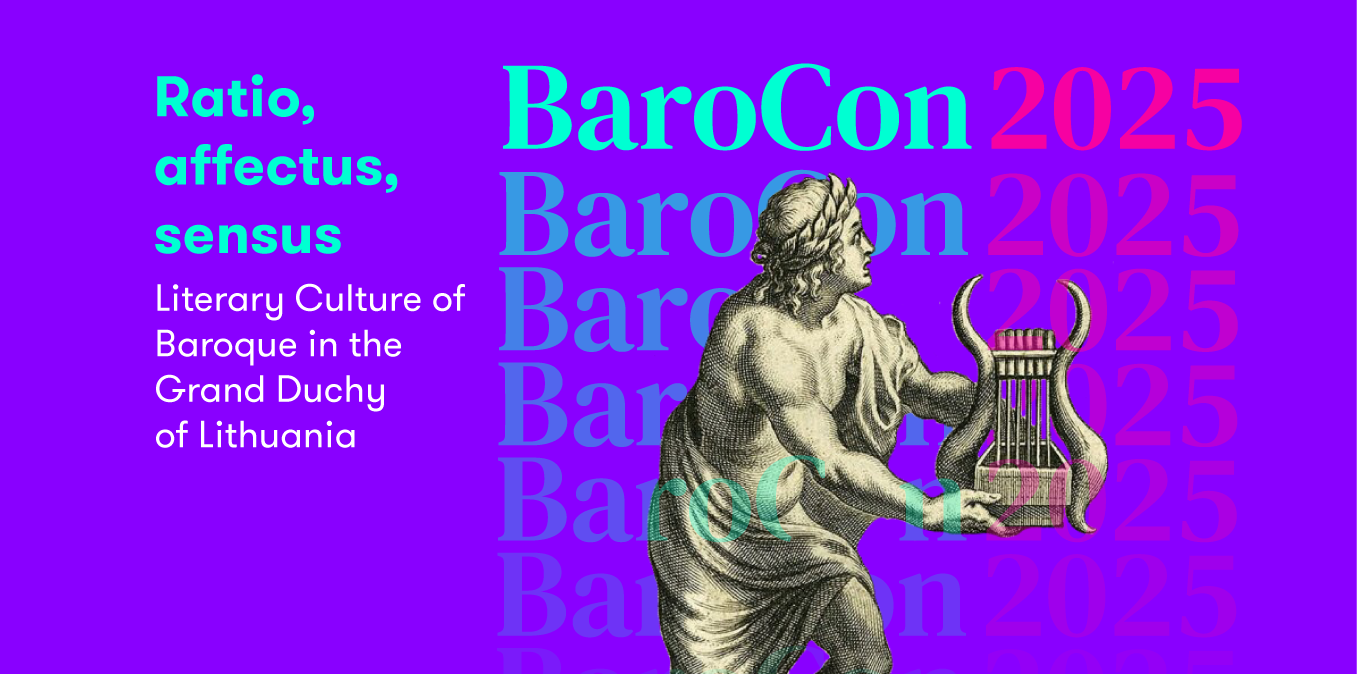Ratio, affectus, sensus: Literary Culture of the Baroque in the Grand Duchy of Lithuania
In 2025, we will commemorate the 400th anniversary of the first publication of Matheus Casimirus Sarbievius' most famous Latin poetry collection 'Lyricorum libri tres' (1625). This has led to 2025 being declared the Year of Baroque Literature in Lithuania. The eminent Jesuit neo-Latin poet of the Polish-Lithuanian Commonwealth, Sarbievius, has been hailed as the Christian Horace and the Sarmatian Horace. His theoretical thoughts on poetry and rhetoric are still highly regarded and have inspired new research on other concurrent themes and authors. This anniversary provides an opportunity to explore the extent and diversity of Baroque literary culture, which has seen a surge of interest in recent decades, both in the academic world and in popular culture. Therefore, the Institute of Lithuanian Literature and Folklore, together with the Faculty of Philology of Vilnius University, is organising an international academic conference "Ratio, affectus, sensus: Literary Culture of the Baroque in the Grand Duchy of Lithuania" on 25-27 September 2025 in the baroque city of Vilnius.
The aim of the multidisciplinary conference is to stimulate discussion on the literary culture of the "long seventeenth century" (from the end of the 16th century to the middle of the 18th century) in the Grand Duchy of Lithuania. This historical period, associated with dramatic changes and a general cultural crisis, is often described in contradictory terms and in constant tension between reason and senses, rigid structure and passions, classifications and impressions, etc. By embracing this contradiction, we invite an exploration of the theme in question through the lens of this dynamic interplay between reason (ratio), emotion (affectus) and the senses (sensus), which can be perceived in various genres of the period, such as poetry, biography, hagiography, rhetoric, private and public correspondence, and so on. The importance of the modern approach lies not only in what it can reveal about the Baroque in the Grand Duchy of Lithuania, but also about subsequent and contemporary literary culture, as scholars have demonstrated the continuing influence of a 'Baroque spirit'.
Event location
25–26 September the conference will take place at V. Krėvė (118) auditorium, Faculty of Philology
27 September the conference will take place at the Church Heritage Museum, Šv. Mykolo g. 9 (entrance from Maironio g. "Arkangelo konferencijų centras")
Keynote speakers

Ona Dilytė-Čiurinskienė
Senior Researcher, The Institute of Lithuanian Literature and Folklore
Prof Stephen Harrison
Professor of Latin literature, University of Oxford
Beate Hintzen
Sensual Visualization in the Poetic Worship of God and Veneration of Saints by Motiejus Kazimieras Sarbievijus and in Paul Fleming’s 'Commemoration of the Dead'
Beate Hintzen
Rheinische Friedrich-Wilhelms-Universität Bonn
Sensual Visualization in the Poetic Worship of God and Veneration of Saints by Motiejus Kazimieras Sarbievijus and in Paul Fleming’s Commemoration of the Dead
Keywords: Sarbievijus, Fleming, epigrams, sense-appealing language, rhetoric
It cannot be determined which of the editions of Lyrica and Epigrammata published between 1625 and 1630 by the Jesuit Sarbievijus was used by the prominent Baroque poet Paul Fleming (*1609 near Leipzig, †1640 in Hamburg), a Lutheran. However, it is beyond doubt that Fleming received the Lithuanian poet’s works and adapted them in his own poetry, particularly in the poems written between 1630 and 1633. Epigrams that Sarbievijus composed in honor of Aloysius Gonzaga, who was beatified in 1605, and on Jesus played a special role for Fleming. These epigrams served as models for several of Fleming’s epicedes dedicated to his friend and fellow student, the Silesian poet Georg Gloger (*1603 in Habelschwerdt, †1631 in Leipzig), who died young. Gloger’s life bore several parallels to that of Aloysius Gonzaga. These epicedes are included, along with other poems – especially friendship poems – in a collection titled Manes Glogeriani. It aims to demonstrate that – transcending confessional boundaries – Fleming’s addresses to a deeply missed, deceased person are expressed in the same emotional and metaphorical, sense-appealing language as Sarbievijus’ addresses to saints, Jesus, and God. This emotionality and sensuality are often achieved through the rational means of rhetoric. Thus, another goal of this study is to reveal how the interplay of emotion, sensuality, and reason functions in the presented poems and, at the same time, to show the intellectual effort required of the recipient in decoding the metaphors and their combinations.


